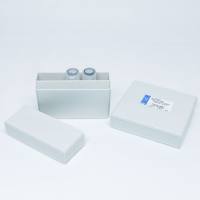Measurement of Complement Hemolytic Activity, Generation of Complement-Depleted Sera, and Production of Hemolytic Intermediates
互联网
651
All of the basic functional assays of complement activity utilize erythrocytes as targets (1 ). For classical pathway assays, the favored target is the antibody-sensitized sheep erythrocyte. For alternative pathway assays, unsensitized rabbit erythrocytes are routinely used. Numerous modifications on the basic assay methodology developed almost 50 years ago have found favor in different laboratories, which makes it difficult to compare results between laboratories. Some basic principles will be illustrated here and simple protocols for determination of hemolytic activities in the two major activation pathways (classical pathway CH50 and alternative pathway APH50) will be provided. It should be emphasized that measurements of total hemolytic complement provide only limited information. They are helpful as screening tests when complement deficiency is suspected (see Chapter 11 ) and can give a rather insensitive measure of complement activation. Despite this limited usefulness, hemolytic complement is often the only assay of complement activity available in the clinical laboratory. For accurate assessment of complement activity, serum samples for complement assay must be obtained fresh, promptly separated and either assayed immediately or stored frozen at −70�C until assay. Samples must not be subjected to freeze-thaw cycles.







